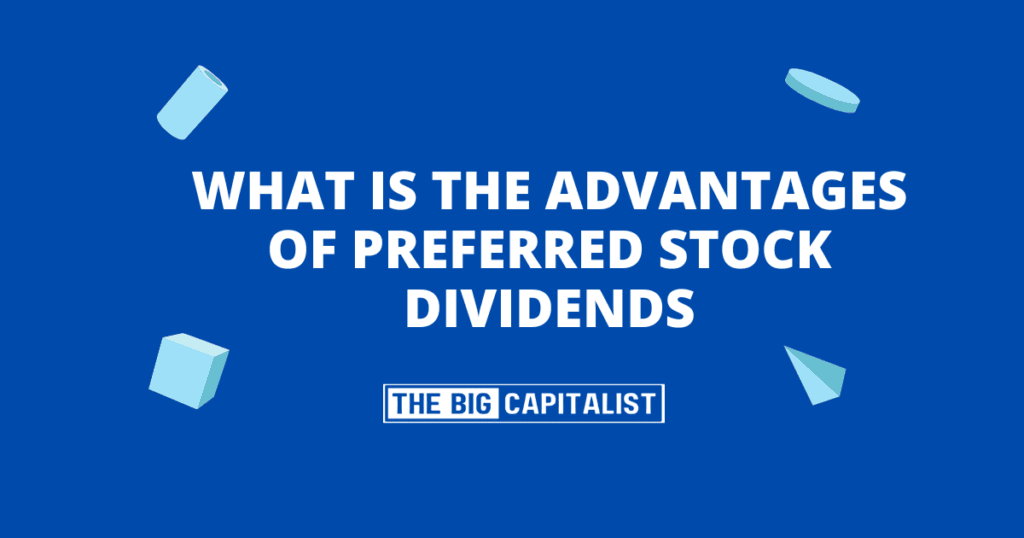When it comes to investing, many people are familiar with common stocks and the potential they have for growth. However, preferred stock is another class of equity that can offer unique advantages, particularly in terms of dividends. In this article, we will look at the benefits of preferred stock dividends. We will also discuss why they can be a good choice for your investment portfolio.
What is preferred stock?
Before examining the benefits, it is important to understand what preferred stock is. Preferred stock is a type of ownership in a company. It has a higher claim on the company’s assets and earnings than common stock. This means that in the event of liquidation, preferred stockholders are paid before common stockholders.
Preferred stock typically features a fixed dividend, which is paid out before any dividends go to common stockholders. This characteristic makes preferred stock an appealing choice for investors seeking steady income from preferred stock dividends.
Benefits of Preferred Stock Dividends
1. Steady Income Stream
One of the primary attractions of preferred stock is the reliable income it can generate. Common stock dividends may vary or not be paid at all, whereas preferred stock dividends are often fixed and paid on a consistent schedule. This can be especially appealing for individuals who depend on their investments for income, including retirees.
2. Priority Over Common Stockholders
Preferred stockholders enjoy priority over common stockholders regarding dividend payments. This means a company must distribute dividends to preferred stockholders before issuing any to common stockholders. When a company faces financial problems, this priority can help protect preferred stock investors worried about their dividends.
3. Potential for Higher Yields
Preferred stocks can sometimes offer yields that surpass those of common stocks or bonds. Preferred stocks are often seen as riskier than bonds but safer than common stocks. This creates a good balance of risk and return for some investors who value preferred stock dividends.
4. Convertible Features
Some preferred stocks have a convertible feature. This lets investors change their preferred shares into a set number of common shares. This can be beneficial if the company’s common stock experiences significant appreciation, providing possibilities for capital gains along with preferred stock dividends income.
5. Tax Advantages
In certain jurisdictions, preferred stock dividends may receive favorable tax treatment compared to interest income from bonds. This can make preferred stock dividends a more tax-efficient avenue for investors seeking regular income.
Comparing Preferred Stock to Other Investments
Preferred Stock vs. Common Stock
Although both preferred and common stocks signify ownership in a corporation, they come with different rights and advantages. Common shareholders have voting rights that enable them to influence corporate decisions. Preferred stockholders usually do not have voting rights. However, they receive fixed dividends and have priority for dividend payments.
Preferred Stock vs. Bonds
Preferred stocks and bonds are both classified as fixed-income securities but differ in critical ways. Bonds are debt instruments, meaning the issuer is obligated to pay interest to bondholders and repay the principal at maturity. Preferred stocks, as a type of equity, have no maturity date and can experience more price volatility. However, they often offer higher yields than bonds and may provide certain tax advantages.
Risks Associated with Preferred Stock
While preferred stock can be a valuable component of an investment portfolio, it is crucial to understand the risks:
Interest Rate Risk
Preferred stocks are sensitive to interest rate fluctuations. When interest rates go up, the value of preferred stocks can go down. This happens because new stocks usually offer higher yields. As a result, older stocks become less attractive. This can impact the attractiveness of their dividends to investors.
Credit Risk
Preferred stockholders depend on the issuing company’s ability to pay dividends. If the company runs into financial problems, it may suspend or reduce dividend payments, affecting the income stream of those relying on preferred stock dividends.
Limited Capital Appreciation
Preferred stocks typically do not have the same growth potential as common stocks. Although they can deliver consistent income, they may offer less opportunity for significant price appreciation, focusing primarily on preferred stock dividends.
Tips for Investing in Preferred Stock
Diversify Your Portfolio
To reduce risk, it is essential to spread your investments across multiple sectors and issuers. This strategy lowers the impact of any single company’s financial difficulties on your overall portfolio.
Research the Issuing Company
Conduct thorough research on the financial health and dividend payment history of the company before buying preferred stock. Focus on corporations with a consistent record of paying dividends and maintaining stable financial performance, ensuring reliable preferred stock dividends.
Consider Interest Rate Trends
Monitor interest rate movements, since they can influence the value of preferred stocks. If rates are predicted to rise, it may be prudent to consider preferred stocks with shorter durations or fixed-to-floating rate features, impacting preferred stock dividends.
Conclusion of Preferred Stock Dividends
Preferred stock dividends can be a dependable source of income, prioritized over common stock dividends. They provide features for income-focused investors. These investors want to balance risk and reward. However, as with any investment, there are risks that must be carefully evaluated.
By knowing these benefits and risks, you can make better choices about adding preferred stock to your investment portfolio.
FAQs
- Dividends: Preferred stock dividends are fixed and prioritized over common stock dividends.
- Voting Rights: Common stockholders usually have voting rights, while preferred stockholders do not.
- Risk & Growth: Preferred stock offers steady income with limited growth potential, whereas common stock has higher growth potential but more risk.
- Steady Income Stream: Fixed and consistent dividends.
- Priority Payments: Dividends are paid to preferred stockholders before common stockholders.
- Higher Yields: Often provide better yields than bonds or common stocks.
- Convertible Features: Some can convert to common stock, offering potential capital gains.
- Tax Advantages: In some cases, preferred dividends are taxed more favorably than bond interest.
- Interest Rate Risk: Value decreases when interest rates rise.
- Credit Risk: Dividends may be suspended if the company faces financial trouble.
- Limited Capital Appreciation: Preferred stocks focus on income rather than price growth.
- Diversify across sectors and issuers.
- Research the company’s financial stability and dividend history.
- Monitor interest rate trends to assess value changes.
- Consider features like convertibility or fixed-to-floating rates.
















